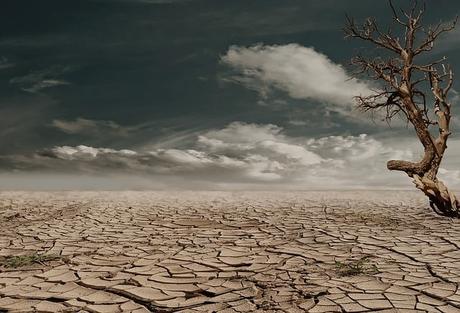Recovery from a human-caused mass extinction event on our planet would take about 10 million years, scientists predicted after probing the possible impacts of climate change.
In the paper published in the journal Nature Ecology and Evolution, the authors wanted to know the time Earth takes to get back to former levels of biodiversity after the mass extinction event. “Humanity is undeniably causing elevated rates of biodiversity loss through climate change, habitat destruction, invasive species introduction, and so on,” the authors warned in their study.

Paleobiologists searched for the answer in the record of the fossil of tiny single-celled planktic foraminifera following the Cretaceous-Paleogene extinction event that occurred nearly 66 million years before. Out of the five major mass extinctions in the history of our planet, this was the most recent and quickest and also the only major extinction event that unfolded faster compared to present climate change. During the mass extinction of the Cretaceous-Paleogene, 80 percent of animals got killed including non-avian dinosaurs.
The different species of foraminifera was compared by the team that existed in the 20 million years towards the end of the mass extinction of the Cretaceous and into the subsequent period of recovery and found the diversity of species recovered only after 10 million (approx.) years.
Examining the fossil record, the authors of the study explained that after a mass extinction, swathes of new species could appear slowly than predicted. The authors guessed this due to the way species repopulate.
Dr. Andrew Fraass, the co-author of the study and expert in planktic foraminifera at the University of Bristol, told Newsweek: “Foraminifera are useful at the species level because of their superior fossil record, so we’ve been able to look at this process in a closer way than anybody else.
“From this study, it’s reasonable to infer that it’s going to take an extremely long time—millions of years—to recover from the extinction that we’re causing through climate change and other methods.”
Fraass also pointed out one limitation of the said study stating that the planktic foraminifera may be the best fossil record we have but is of “one group, and a single-celled one at that.” It is “very very difficult” to calculate the time it would take for biodiversity to recover on a species level from the records of the fossil currently available to scientists.
“Our finding is confirming previous theoretical work, so while that’s a limitation, it’s hypothesized [that] it’ll probably be the same for other groups as well,” he said.
“It [the research] is an apt warning about the time it takes to recover from massive losses in species,” said Fraass.
“We focus frequently on how long it’ll take to recover from climate change (by getting CO2 back down to pre-industrial or near pre-industrial levels), which is on the scale of thousands of years, but this work corroborates it’ll take millions of years for biodiversity to recover from humans.”
He further explained: “It’s a finer point whether or not we’re in a mass extinction currently, as paleontological records are based on shallow marine shells and the number of families/genera that go extinct, while modern extinction is based on all organisms and species. It’s a really cool question if you’re a paleontologist, but the basic answer is: if we’re not currently in a mass extinction then we’re close to one.”
Dr. Jan Zalasiewicz, professor of palaeobiology at the University of Leicester, who was not involved in the research, told Newsweek: “The study is significant because it helps us appreciate the very long-term consequences of the striking and geologically rapid changes currently taking to the Earth’s biosphere.
“The rate of recovery shown is similar to that in previous studies—of several million years—but the significance here is in its plausible explanation for this long recovery, in emphasizing the importance of the way that complex communities of organisms, that take a long time to build up, themselves create more niches to encourage greater species diversity.”
A separate research paper disclosed last year that global warming caused by humans could even reverse a 50-million-year-long trend of global cooling in just 200 years.

